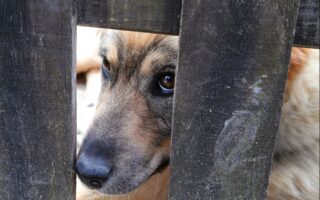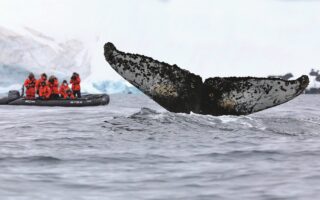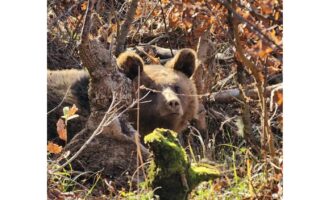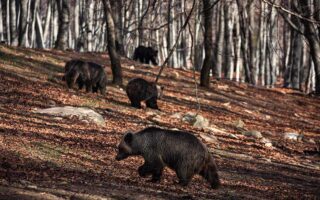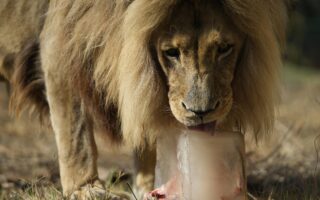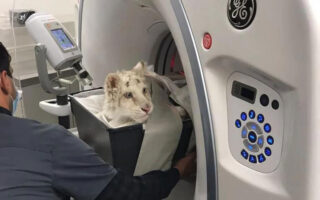Pygmy hippo: Not only cute, but extremely important
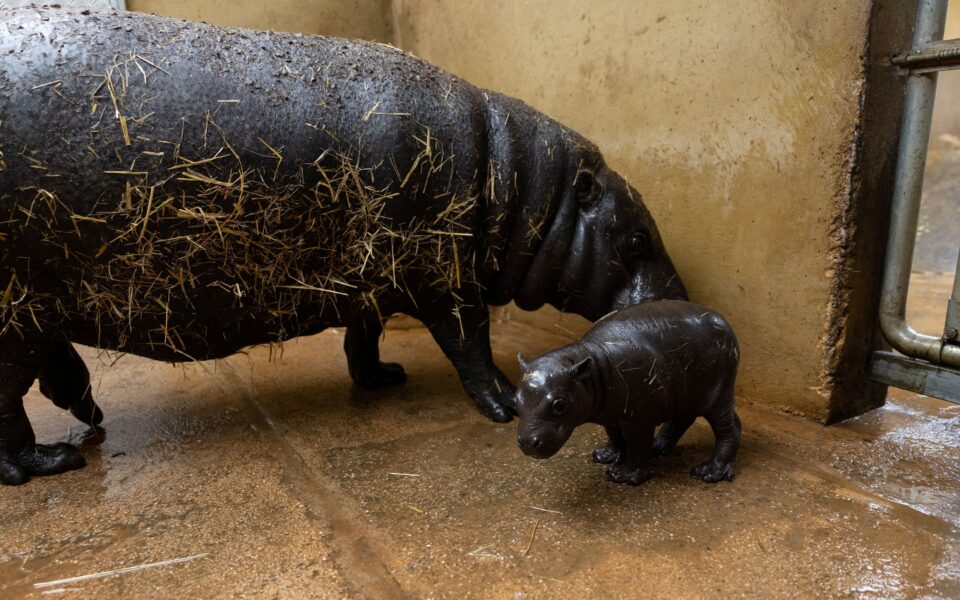
The birth of a male pygmy hippopotamus at Athens’ Attica Zoological Park on feb. 19 was viewed as an important development for the survival of its species. The hippo belongs to one of the rarest and most endangered species. It is estimated that only 2,000 – 2,500 live in the wild and more specifically in the Ivory Coast, Guinea, Liberia and Sierra Leone. Their main characteristic, as evidenced by their name, is their size. It is five times smaller and 10 times lighter than ordinary hippos, while they also have a smaller upper jaw.
This particular hippopotamus – still unnamed – has now reached 18 kilograms. The experts who monitor its health say that they are particularly happy with his development, adding that the fact that it is a boy is a positive development.
“The ratio of female to male pygmy hippos in zoos is 7 to 1, so you understand that the birth of a boy is important for the evolution of his species,” zoo founder and CEO, Jean Jacques Lesueur, tells Kathimerini. The young mammal’s parents, Lizzie (named after late Queen Elizabeth II, as she was born on her birthday) and Jamal, are in their 20s, and hippos of this species reach around 30 years of age in captivity. The important thing is that both have a registered family tree, as in such rare animals there is always the risk of inbreeding.
“Consider that in 2023 we had a total of 12 births in zoos and about half survived. Lizzie had previously given birth to four other babies, three of whom survived. We don’t have them here in the park, just like we won’t keep the baby hippo that was just born,” he adds.
The Attica Zoological Park is a member of the European Association of Zoos and Aquaria (EAZA) which monitors and records the genealogy and reproduction of endangered species through special programs. For each species there is a corresponding coordinator, who will decide where the little hippo will continue its life. “As soon as it reaches the age of three, its species coordinator will tell us which park to send it to, so that it can be paired with a suitable mate, thus avoiding even the slightest possibility of inbreeding,” Lesueur explains.
Dimitris Posantzis, the zoo’s veterinarian, along with a colleague and the caretakers, monitored Lizzy throughout her pregnancy, but without any particular stress. “We did not have to intervene, as these animals usually give birth easily and do not require any help from us. Of course, we watched Lizzie from the first stages of her pregnancy, we did ultrasounds for the development of the fetus, while during the days when she would deliver there was additional monitoring through the cameras. Although Lizzie is now used to human presence we didn’t want to burden her by being around her all the time. Fortunately, everything went well and we are very happy,” he tells Kathimerini.
Both Lesueur and Posantzis point to the contribution of zoos to saving endangered species. “There are many cases,” Lesueur says, giving as an example the Bali myna, also known as Rothschild’s mynah, a beautiful white songbird, which fell victim to the uncontrolled rare animal trade in Bali. “In 2001 there were very few left in the wild, the number recorded was 6! At the same time, however, in zoological parks the species has successfully been reproduced and through repeated reintroductions the species is beginning to recover. The current population in Bali comes from zoos. But it is still in danger.”
Another example that comes up for discussion is the scimitar oryx (Oryx dammah), a species of antelope that, although it was one of the most common large mammals in the Sahara, was in danger of extinction in the 1980s-90s, as its huge horns had made it a target for hunters. It was declared “extinct from the wild” in 2000, but has now been reintroduced throughout North Africa.
“Thanks to zoo breeding programs, the species survives today,” Lesueur says, closing our discussion with the story of the Rodrigues fruit bat, also known as Rodrigues flying fox, that lived in Rodrigues, an island in the Indian Ocean. “In the 1970s, after a devastating cyclone, the population of this species dwindled to less than 100. Then the Durrell Wildlife Park on the isle of Jersey began a very successful breeding and reintroduction program. Now their population is considered safe, even in the event that disaster strikes again in nature,” he says.
